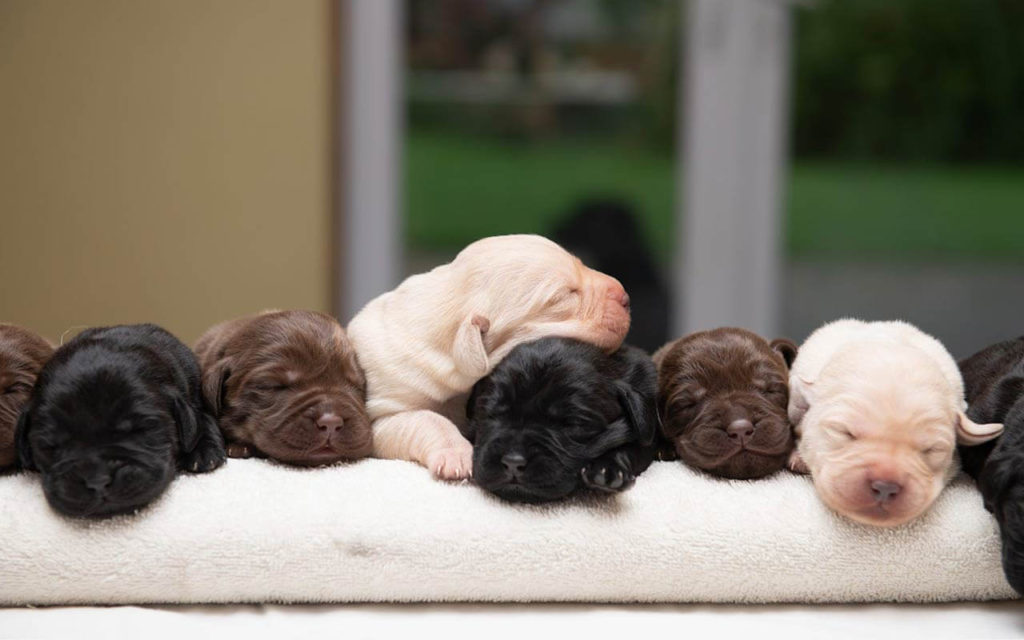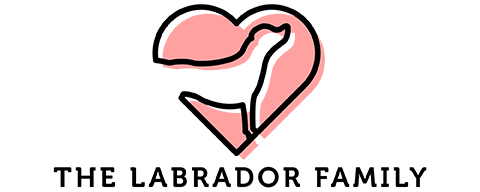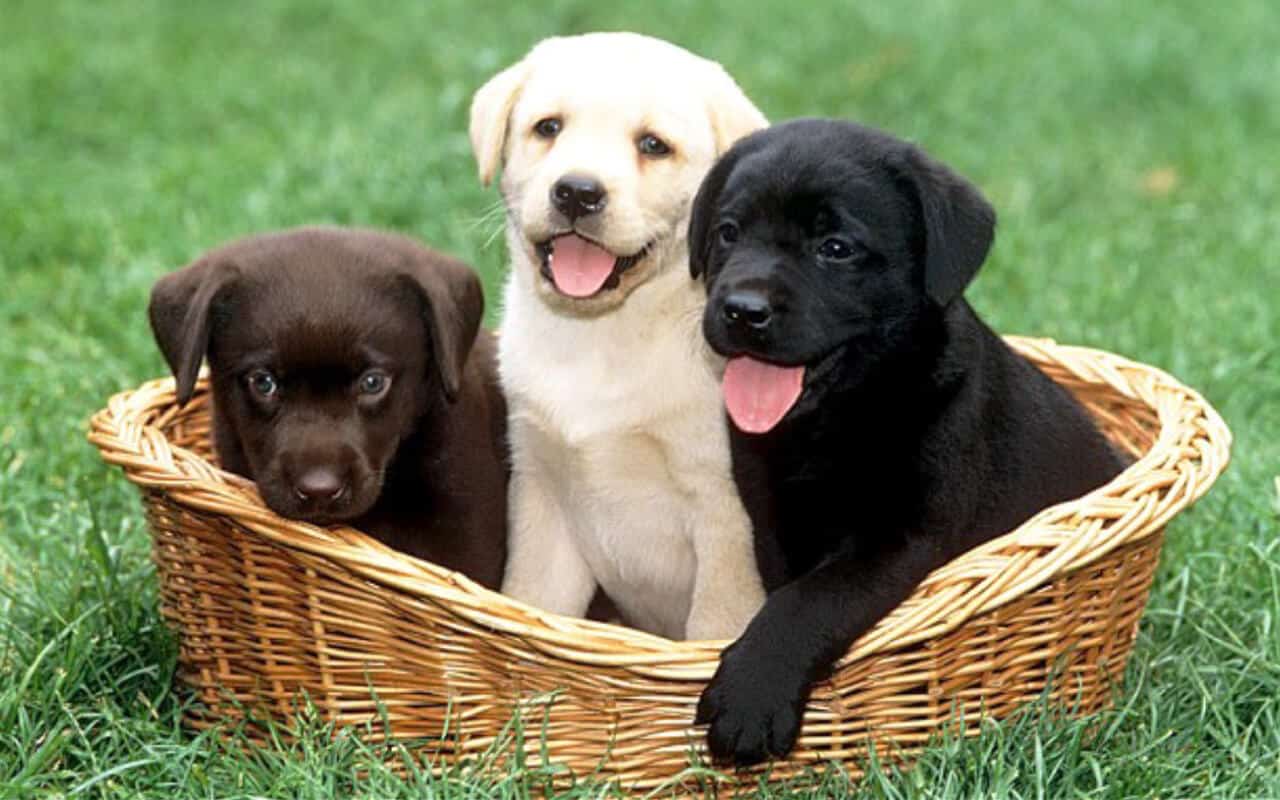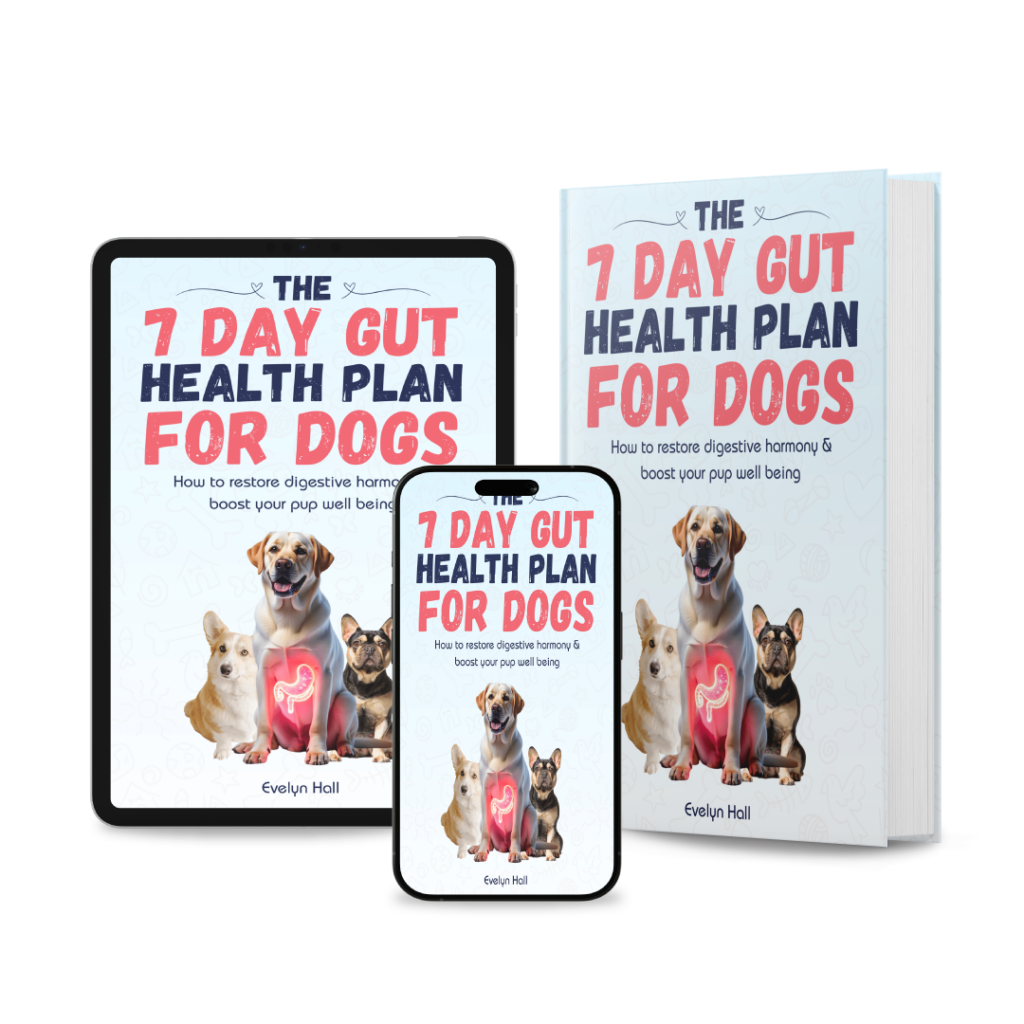Like all puppies, Lab puppies need love and affection to grow happily and healthily. But taking care of them won’t be easy if you don’t have much time to spend with them. Does that mean Lab puppies are high maintenance?
Lab puppies are no more high maintenance than most dog breeds. However, bear in mind that Labradors, be it puppies or adults, are active dogs, meaning they require plenty of exercises. Also, since Labradors have a double-coat, they’ll shed year-round. That said, regular grooming is essential.
Keep reading as I further discuss whether Lab puppies are high maintenance and their essential traits that may or may not surprise you.
Lab Puppies Are No More High Maintenance Than Other Dogs
Labradors are not difficult to care for if you know how to care for them. Whether you have a Lab puppy or an adult, you want to ensure that you can provide them with their needs.
Both Lab puppies and adults are no more high maintenance than other dogs. But they need require regular grooming, plenty of playtimes, and training.
Because Labradors are a smart breed, they need to be mentally and physically stimulated. These dogs were bred as working dogs, hence their tendencies to stay busy and entertained.
Your Lab may display destructive behaviors if their basic needs are not met.
Lab Puppies Need a Lot of Playtimes
You may or may not be surprised to learn that Labradors enjoy being out and about more so than some of the other breeds. Lab puppies will want to play more than adult Labs. So during your Lab’s puppyhood, you want to ensure your puppies are getting the attention and playtime they deserve
While it’s true that not all Labrador puppies will be as energetic as others, they’re generally very energetic. These puppies will continue to be playful until adulthood—more playtime for you and your Lab!
It’s essential to note that the background of Labradors as a breed includes their role as hunting and working dogs. It’s no coincidence that the relatively energetic breed has been favored for these types of active, outdoorsy roles.
Also, keep in mind that Labs are somewhat known to develop slightly later than many other breeds psychologically, so it’s important to be patient and cherish the playful puppy stage before your Lab puppy suddenly becomes a young Lab adult.
Yes, Lab adults are playful, too. But they won’t be as playful as Lab puppies!
Even a Bit of Daily Exercise Is Essential for Your Lab Puppy
Like with any puppy, you don’t want to overdo any activities that require physical exertion, as this becomes harmful to the health of your puppy. Easy does it as far as exercise goes.
So, how do you reconcile your Lab puppy being just a tender puppy versus being the naturally active and energetic Labrador breed of dog?
You can help your Lab puppy release any extra energy it might have from feeling cooped up inside all day long by taking them for a short walk down the street.
Go ahead and walk together, long enough that your pup can practice doing their business outdoors and enjoy the fresh air. However, you don’t want the walk to be too long, causing your pup to pant heavily and experience hyperventilating.
Lab Puppies Shed Year-Round
Labradors, be it Lab puppies or adults, don’t shed nearly as much as the most prolific of shedding breeds, but they still have a considerable amount of hair that needs to be replaced on a seasonal basis. That’s because Labs have a double-coat.
– Labradors Shed Because They Have a Double-Coat
The origin of the Labrador breed is the island of Newfoundland in Canada. It’s where Labradors would swim across the icy cold Labrador Sea and live together with their owners as hunting and working dogs.
Labs have evolved to have a double-coat, consisting of a soft, warm undercoat and a water-repellent, silky overcoat. The overcoat is supposed to protect the skin and keep the undercoat from getting wet, thereby helping the Labrador stay warm in cold climates.
– Labradors Change Their Coats Twice a Year
Lab puppies and adults shed year-round. But you should watch out for the “coat-changing” seasons—the fall when the thinner summer coat gets replaced by a thicker winter coat and the spring when the reverse process happens.
The spring and fall big shedding seasons are called molting, and they each last 2 to 3 weeks on average.
The best way to minimize the amount of dead undercoat and overcoat on your floors during the year and particularly during the molting seasons is to invest in a brush that allows you to capture the abundance of dead undercoat hairs.
This way, you can be sure that by also brushing your Lab puppy every day, you can preemptively capture dead hairs that would fall anyway from both of the layers of the double-coat.

Lab Puppies Require Quality Playtimes and Proper Training
A big part of being a puppy-owner is giving your puppy the love and basic knowledge they need to be happy and successful as they get older.
Here are a few essential pointers you might want to add to your puppy-care regimen when you welcome a Lab puppy to your household:
– Reward Your Lab Puppy With a Treat While Playing
For a very young Lab puppy less than three months old, there isn’t a need for exercise per se.
However, once your Lab puppy reaches the three-month mark, there are many great ways to keep your pup entertained while stimulating cognitive growth.
One great way to have fun together is to play running and chasing games, at a puppy level, of course.
Another great way to encourage your puppy to play is to improvise a game where your Lab puppy can tap into their inner hunting dog traits and track down something like a delicious pup treat.
Lab Puppies Should Have Early Training Like Other Dogs
Interestingly, when your Lab puppy reaches three months of age, you want to start a training program to teach them a few basic house rules. Your pup will likely need to carry these house rules over through their adulthood life.
Some tricks you’ll want to teach your new puppy include:
- “Use the bathroom” outside on a consistent daily schedule.
- Chew and gnaw on their designated toys rather than on your furniture.
- Eat during mealtimes and not expect to eat only when they want to eat.
- Heel and walk appropriately on a leash when going outdoors.
Suppose you can find a way to seek a professionally-licensed dog trainer familiar with Lab puppies. That’s undoubtedly the best way to introduce your puppy to a new kind of lifestyle with commands and get to work near and listen to the voice of an “outsider” from a young age.
Lab Puppies Require a Proper Diet To Maintain a Healthy Weight
Labradors, most likely due to their evolution in cold climates as working dogs, tend to be ready to eat whenever you offer food for its benefit. It may be a practice similar to hibernation, by eating when food is available with the anticipation that the owner thinks they’ll be in short supply of food soon.
This may be a canny trait to have in the direr of situations, but survival shouldn’t be so difficult and, quite frankly, unhealthy for the vast majority of Lab puppies.
Labs can eat a lot. If you don’t train your Lab to eat the appropriate food amount, you risk overfeeding your dog. That can lead to obesity — Labs are prone to obesity.
Because Labs are prone to obesity, you want to monitor your dog’s diet, especially in puppyhood. It’s best to give your Lab high-quality food.
Here are some basic guidelines you can follow to help nudge your Lab puppy’s new life in the right direction.
– Maintain a Clean Water Supply but Don’t Free Feed
Any animal should always have continuous access to clean, freshwater, and Lab puppies are no different.
Although this might mean that your Lab puppy will end up wanting to go out to pee more frequently, as your pup grows older, they’ll develop better bladder control and an experienced understanding of the daily bathroom-breaks routine.
On the other hand, because of the predisposition for Labs to eat more than they currently need to consume to stay healthy, you should avoid feeding your Lab puppy more than a few treats here and there outside of scheduled mealtimes.
Not only does this encourage your puppy to eat its meals when it’s time to eat, but it also tempers the puppy’s expectations of how much food it can potentially receive outside of meals.
– Cater to Your Lab Puppy’s Nutritional Needs
Your Lab puppy, like any other animal, will be happier and healthier the closer to the optimal balance of both macronutrients and micronutrients it is to its actual breed—and age-specific needs.
Doing a good amount of research before feeding your Lab puppy would be a great idea so that you can tailor at the very least some of the most fundamental feeding practices that dog science professionals recommend.
Another fantastic route would be to purchase puppy-labeled food that’s also highly nutritious and wholesome or puppy food made for large breeds or even for Labradors specifically.
Here’s a list of some of the potentially best food options to feed your Lab puppy:
- Royal Canin Labrador Retriever Puppy Food
- Taste of the Wild Grain-Free Puppy Formula
- Blue Buffalo Large Breed Puppy Food
- K9 Natural Grass-Fed Beef Feast Puppy Food
It should be noted that all of the above puppy-specific foods are dry or freeze-dried. The most important reason for this trend is to support the growth of healthy gums, teeth, and jaw muscles for puppies just beginning to eat “real” foods.
There are many different brands of inventive and super health-aware puppy and dog foods on the market today, so you should have lots of fun comparing the best possibilities for your Lab puppy and learning new things along the way.
Conclusion
In summary, Lab puppies exhibit a few traits that you may want to note before committing to becoming a lifelong caretaker for one. However, suppose you can allow your Lab to enjoy being active outdoors regularly and respond to their unwavering yearning for companionship. In that case, Lab puppies aren’t all that high-maintenance at all!
Read Also:



